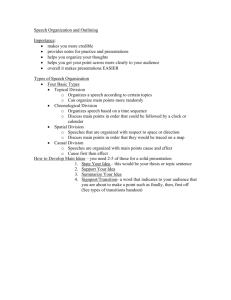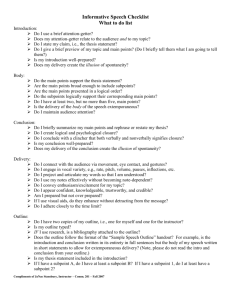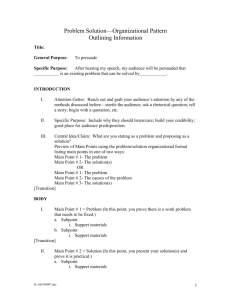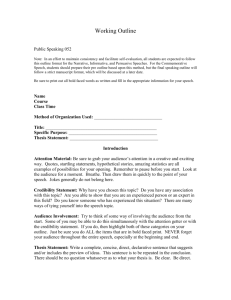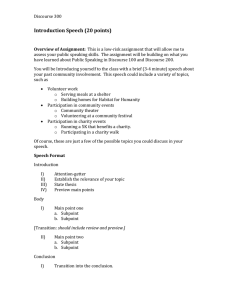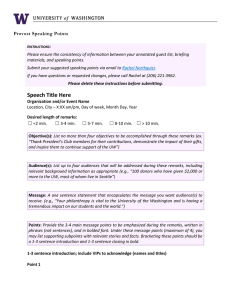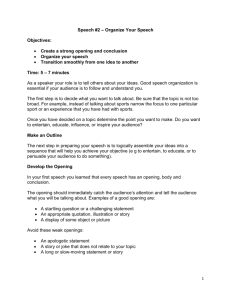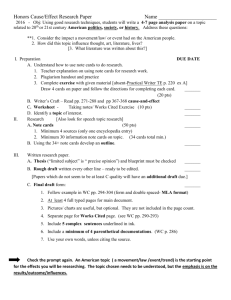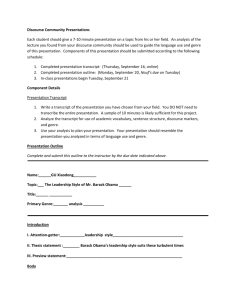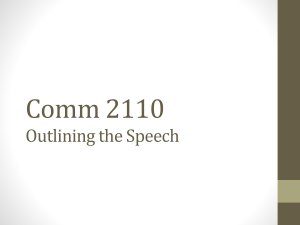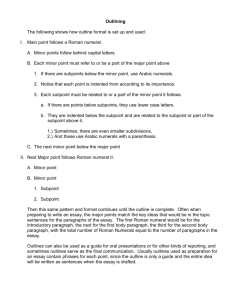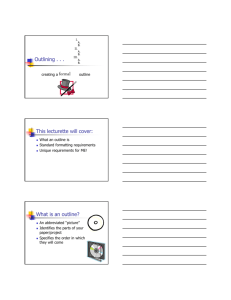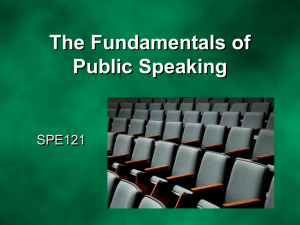Basic Speech Outline Format
advertisement
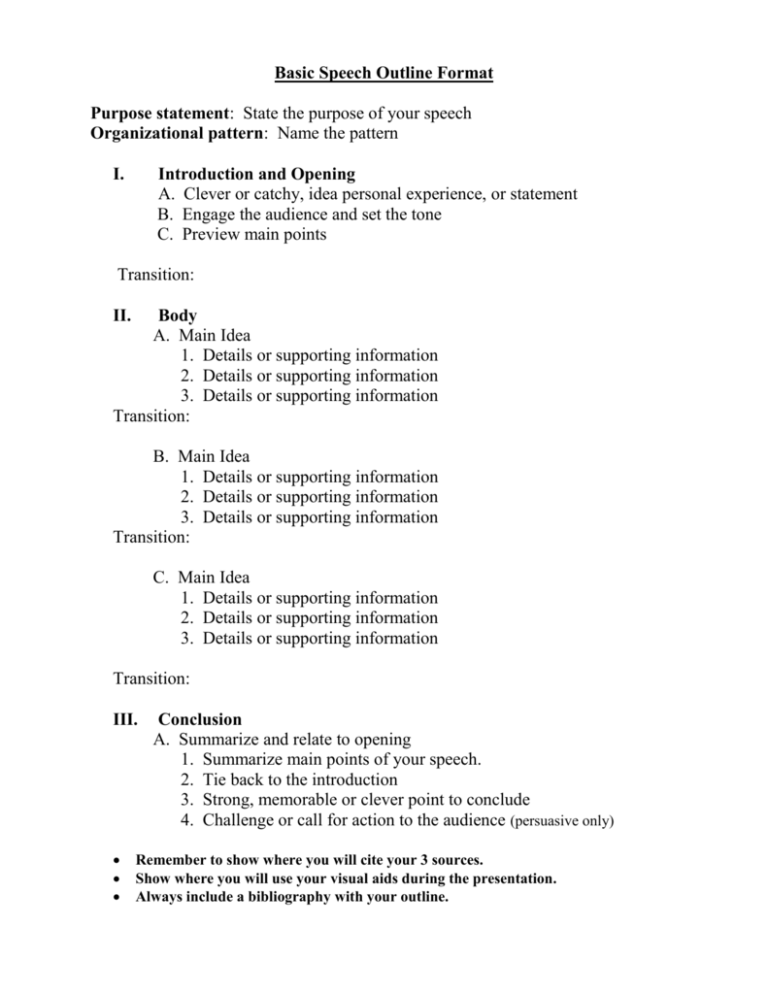
Basic Speech Outline Format Purpose statement: State the purpose of your speech Organizational pattern: Name the pattern I. Introduction and Opening A. Clever or catchy, idea personal experience, or statement B. Engage the audience and set the tone C. Preview main points Transition: II. Body A. Main Idea 1. Details or supporting information 2. Details or supporting information 3. Details or supporting information Transition: B. Main Idea 1. Details or supporting information 2. Details or supporting information 3. Details or supporting information Transition: C. Main Idea 1. Details or supporting information 2. Details or supporting information 3. Details or supporting information Transition: III. Conclusion A. Summarize and relate to opening 1. Summarize main points of your speech. 2. Tie back to the introduction 3. Strong, memorable or clever point to conclude 4. Challenge or call for action to the audience (persuasive only) Remember to show where you will cite your 3 sources. Show where you will use your visual aids during the presentation. Always include a bibliography with your outline. SPEECH OUTLINE WORKSHEET You may use this worksheet to help you assemble your speech and put your information into outline form. You do not need to turn in any worksheets. Remember you will turn in a typed outline on the day of your speech presentation before your speech, along with the grading rubric. They will be returned to you along with your peer critiques after your speech is graded. Purpose Statement: To (demonstrate, inform, or persuade) my audience…__________________________________________________________. I. Introduction (Your goal here is to draw us into your speech...) A. Attention Grabbing Material (This step helps us focus our attention on you and your message. It is suggested that you begin with a story, quote, statistic, definition, use of suspense, etc. Never begin with, "Hi I am ___ and today I am going to talk about ___.") B. Credibility Material (Here the speaker tells the audience why he or she is credible, can be trusted, knows the materials, etc. How do you know about this? Why are you interested, etc.?) C. Thesis & Preview: (Here summarize your speech in one sentence and continue by previewing the main points of the speech) Thesis: _______________________________________________________________ Preview: Today I will tell you first ______________, second _____________ and third ______________. (Transition into Body of Speech -- Now that we've covered _______, let's go to ____________ OR SOMETHING MORE CREATIVE WOULD BE WONDERFUL!) II. Body A. Main Point #1 (Your main points are the main ideas of your speech. They are the ideas necessary in supporting/proving/explaining your thesis. They are "reasons why," "primary types," "steps," etc. Speeches are organized into 3-5 main points. I included a space for three main points in this worksheet. However, feel free to modify this format as you see necessary.): 1. Subpoint #1 (The subpoints are the breakdown of the main point into smaller units. They usually are your examples, narratives, statistics, testimony, etc. In other words, the subpoints explain the main points. You may have 3-5 subpoints. I have listed three here. Feel free to modify this as you see necessary. Do use the golden rule: one hard piece of "fact" or "statistics," one piece of "softer" evidence such as an example or story and then a piece of testimony to give it credibility). 2. Subpoint #2: (cite a source) 3. Subpoint #3: (Transition into Main Point 2 -- Now that we have covered __________, let's move to __________. Again, use a more creative approach if you'd like! Just remember that your transitions need to review your last point AND preview your next point. They show a connection and are a good time to remind the audience why this information is important.) B. Main Point #2 1. Subpoint #1: 2. Subpoint #2: 3. Subpoint #3: (cite a source) (Transition into Main Point 3 Now that we covered _________, finally we will _______________. Or again something more creative would work too!) C. Main Point Three: 1. Subpoint #1: 2. Subpoint #2: (cite a source) 3. Subpoint #3: (Transition to the end... begins with the signpost as indicated below…) III. Conclusion A. Signpost (signals the end such as, "To sum things up…" or something more creative.) B. Summary (reviews the main points of the speech in the order covered) C. Tie Back (refer to the story, quote, or other attention grabbing device you used in your introduction) D. Concluding Memorable Remarks (gives you a way to end; never, ever end on "that's it" -- plan out the end, better yet, tie back to the introduction's attention device) (Attach your works cited or bibliography in APA or MLA format)
